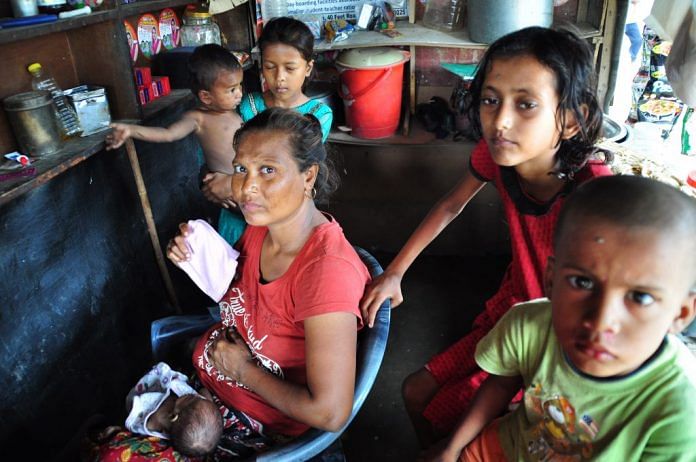India must work with Myanmar, Bangladesh to minimise effect of violence on Rohingya refugees so that they are not susceptible to exploitation.
Until the latest round of violence erupted in the Rakhine area of Myanmar, most in India were unaware that close to 40,000 displaced Rohingyas were already living in India — the largest section being in the Jammu region. The Rohingya crisis is an issue which must draw public interest in the context of its security impact.
Like any other poverty-stricken region in the world, which has ethnic diversity, Rakhine’s demography has a majority Buddhist population with a Muslim minority. Traditional antipathy based on competition for socio-economic space has produced repeated bouts of violence. Nations without democratic credentials have a propensity for not protecting and empowering ethnic or religious minorities. That’s the case with Myanmar too. The moment such displacement becomes transnational, the impact of violence in a remote part of the globe can have a cascading effect elsewhere in the world.
Given the crisis within Islam and the emergence of extremist groups, there is always the potential of displaced youth becoming their cannon fodder. Thus a group such as ISIS whose charm may be wearing thin, would have no difficulty to penetrate camps of displaced persons wherever they be. The Taliban was in fact born in the seminaries set up in refugee camps as they poured out of Afghanistan in the early Eighties, after the Soviet invasion.
The impact of violence in Rakhine has been the outpouring of refugees into Bangladesh. There is little that a nation can do to stop such an influx unless it wishes to use counter violence and face international ire. The paradox is also that no one will rush to assist it either in the management of refugees. The UN agencies are active but they have also been asked to leave Myanmar.
Boundaries have become increasingly fragile despite better technology for border management. This was so clearly demonstrated through the recent outpouring of hordes of displaced people from North Africa and from Syria into Europe. The migration crisis in Europe has also led to a change in the nature of threats. No one knows this better than India where demographic change in the areas adjoining Bangladesh has been underway for several years.
The 250,000 Rohingyas who are reported to have entered Bangladesh this time may aspire for a future in India. The concern is not just human migration but susceptibility to violent extremist ideology, aided by the tools of the information revolution. The Rohingya crisis is affecting Bangladesh and India due to proximity but it is having an impact in South-East Asia too.
The current concern is also about potential recruits for the ISIS in the Mindanao province of Phillipines. That is where the ISIS has had attained marked success outside the Syrian theatre, in the city of Marawi where a regular army is reluctant to engage it in street battles.
Southeast Asia is brimming with shades of violent extremism — from the attempted radicalisation in Bangladesh to the Rohingya issue in Myanmar, the Islamic insurgency in southern Thailand, the Moro militancy in the Philippines and the ever present threat of Jemmah Islamiyah in Indonesia — all of which could get netted to create pan regional radical Islamism, the dream of ISIS.
Expanding regional surrogates working with loose ISIS linkages, like in Africa and portions of West Asia, have serious connotations for South-East Asia.
Where does that leave India? With uncontrolled Rohingya presence and the threat of arrival of more, the potential of their exploitation remains high. India must work with both Myanmar and Bangladesh to minimise the effects of violence. State violence emanating from within Myanmar needs to be controlled although the trigger was the attack by the Arakan Rohingya Salvation Army (ARSA). There is also much concern that India’s North-Eastern militant groups may find expanded sanctuaries in either Myanmar or Bangladesh if the current Rohingya crisis is allowed to fester and India is perceived to be taking sides.
The big bad boys from across the western international border would be looking upon the crisis as yet another opportunity to exploit the rising communal divide in India.







THIS is my only my view, i dont know what my govt thinks, but i have full sympathy about them. my country is too big to keep them all….
Bring them back to their homeland
India has to be careful as well as humanitarian, we can not ignore women and children. Please document their presence and track their activities. They need some support where UNHCR can help. This should not be made religion issue. We though have so much atrocities on Hindus and Christians in neighborhood but India can not ignore plight of Muslims even. Lets join hand and support poor troubled people.
I am sure there is sufficient space for socio-economic status for both, the Buddhists, and the Rohingya Muslims in Myanmar. Therefore, the reason for this forced exodus must lie somewhere else. What is it that has really triggered this violence against Rohingya Muslims? They have been living in Myanmar ever since, so, why this violence? It would be worthwhile trying to understand the reasons for this exodus at this juncture.